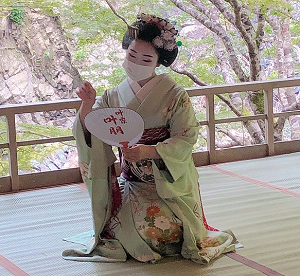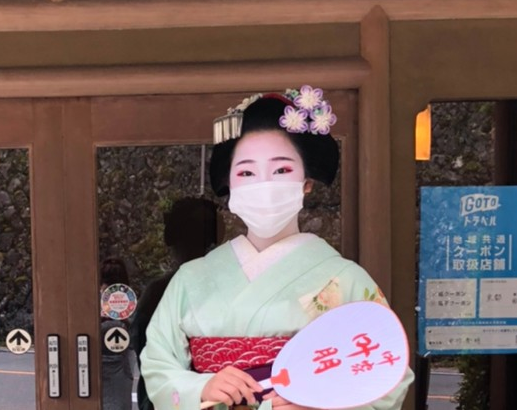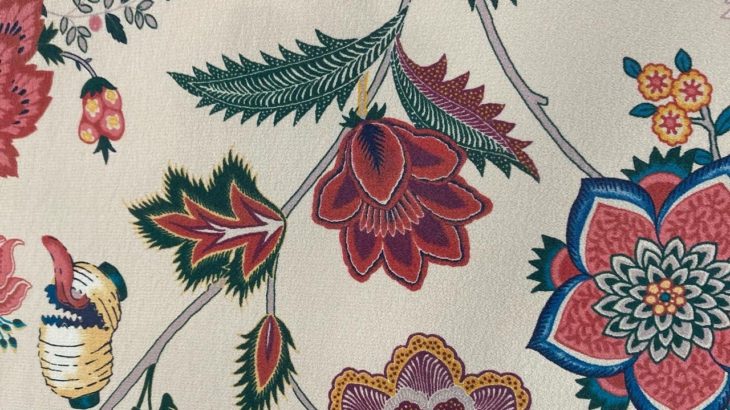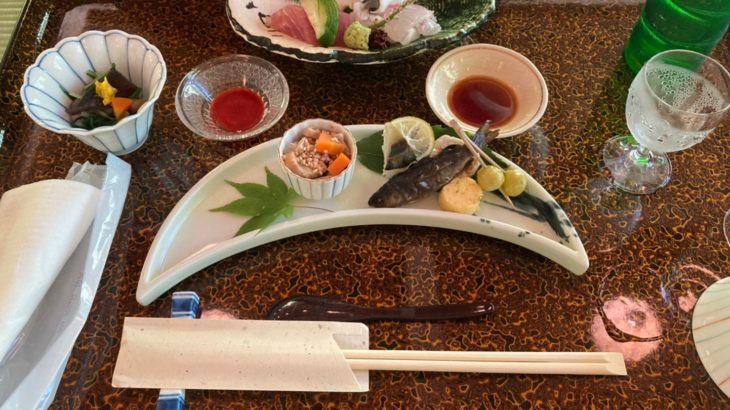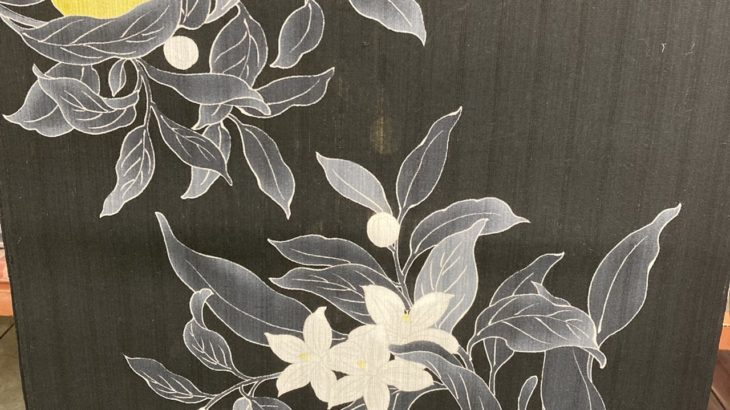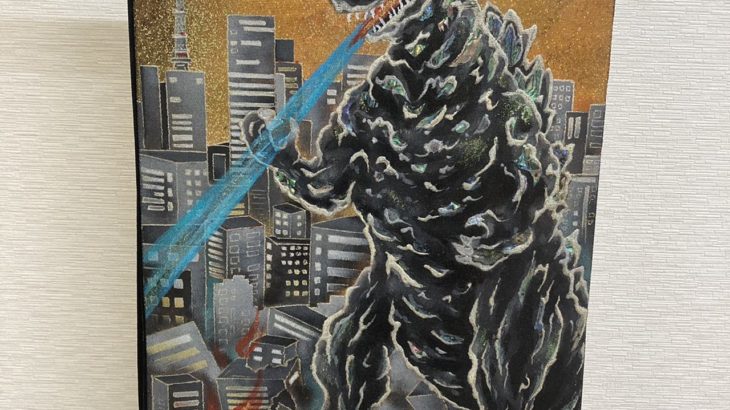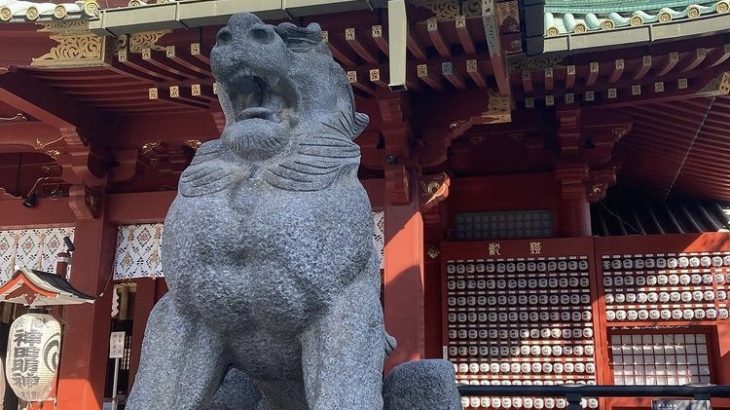Hello, this is Shinji from Warashibe-choja.jp. It’s still hot, but the other day I went to Kawadoko in Kyoto. Kawadoko is a place where you can sit on the river and eat while cooling off on the floor. This time, I had a meal there and watched the maiko dance. I would be happy if you could watch the video of the maiko dancing later on, as I have uploaded the URL. Today, I would like to talk about maiko in Kyoto, which you should all try to meet at least once.
About Maiko in Kyoto
A maiko is a woman who adds entertainment to banquets by singing, dancing, and playing the shamisen (three-stringed instrument) in the flower districts called Gokagai in Kyoto (Kamishichiken, Gion Kobu, Gion Higashi, Pontocho, and Miyagawa-cho), and is in the apprentice training stage of a geiko. The age limit for maiko is up to 20 years old, and maiko are trained at the Okiya (a place like a training school for geiko) from the age of 15, and finish their training at the age of 20 to become geiko.
Characteristics of Maiko
Nihon-gami ( =Japanese coiffure )
A maiko’s nihon-gami is her natural hair. When a geiko becomes a geisha, she can wear a wig. When they sleep, they use high pillows like those used in the Edo period to keep their hairstyle intact.The change from the hairstyle called “wareshinobu” to “ohuku” is called “mizuage” in modern times, as the maiko’s training progresses to become a full-fledged maiko. (This used to have a different meaning, but I won’t explain it here. ) On the first day of each month, the hair is replaced with a hairpin that matches the season. This time it was September, so the maiko was wearing a bellflower hairpin.
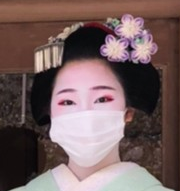
lipstick
If you look at the mouth of a maiko, you will see that some maiko only put lipstick on their bottom lip, while others put lipstick on both their top and bottom lips. In fact, when a maiko is just starting out in the tatami room, she can only put lipstick on her lower lip. They are only allowed to apply lipstick on the upper and lower lips when they are given permission by the proprietress or senior maiko. Due to the new influenza COVID-19, we were able to see them wearing masks this time, which was very rare.
The maiko who came to seat us this time was a veteran maiko named “Kanotomo”, so she was wearing lipstick on both her upper and lower lips.
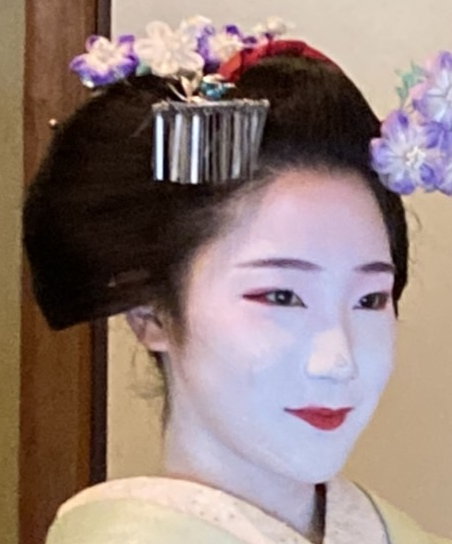
Shape of the Kimono
The kimono worn by maiko is different from the normal kimono in that they walk around with the long hem dragging. Of course, when walking outside, they hold the kimono by hand so that the hem does not get dirty.
Also, the shoulders and sleeves of the kimono are sewn with “Kata-age” and “Sode-age”. When making a kimono for a child, this is a sewing method that hopes for the child’s growth so that it can be stretched when the child grows up. Maiko are also made in this way because they are on their way to becoming full-fledged geiko.
Pattern of Kimono
The pattern of the kimono also varies depending on the years of experience of the maiko. The younger the maiko, the more flamboyant the patterns are, and the patterns extend to the shoulders. The younger the maiko, the more flamboyant the patterns.
Darari-no-obi
Speaking of maiko, “Darari-no-obi” is also mentioned in the lyrics of “Gion Kouta”. It is called “Darari-no-obi” from Darari (= Japanese onomatopoeia) and the fact that it is tied hanging down. The family crest of the Okiya to which you belong is woven on the part that hangs down, so that you know which Okiya you belong to. This is the family crest of “Kanoya” in Gion Higashi. Maiko do not tie the obi themselves, but the men of the Okiya called “Otokoshi” tie the obi.
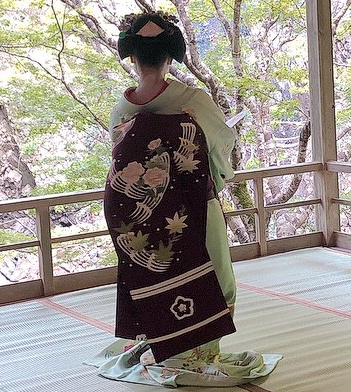
Pocchiri
The obi is decorated with an obi-dome called “Pocchiri” (an ornament attached to the obi-shime). It is much larger and more luxurious than a normal obidome. Some of the ornaments that have been handed down from generation to generation in Okiya are so valuable that you cannot put a price on them, so do not touch them.
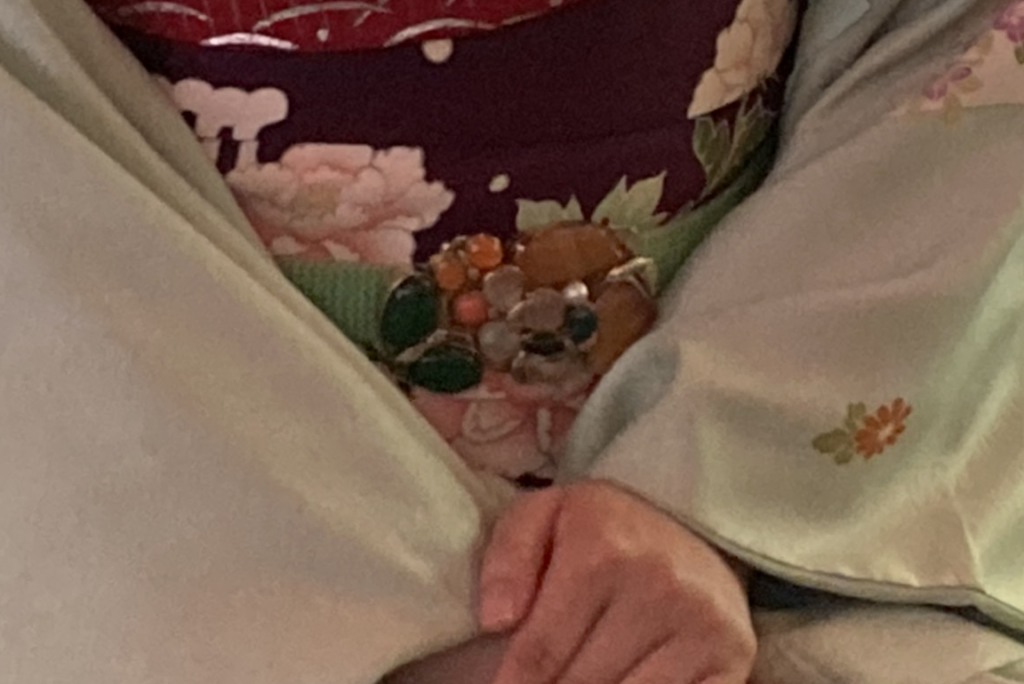
Senja-fuda
They have a kind of business card called Senja-fuda, which can be obtained at the tatami room. It is said that if you put the maiko’s Senja-fuda in your wallet, ‘money will come in’, and if you put it on your cell phone, ‘good news will come in’, and it will lead to business opportunities. Maikomu means “come in” in Japanese. If you meet a maiko at a tatami room, be sure to get one.
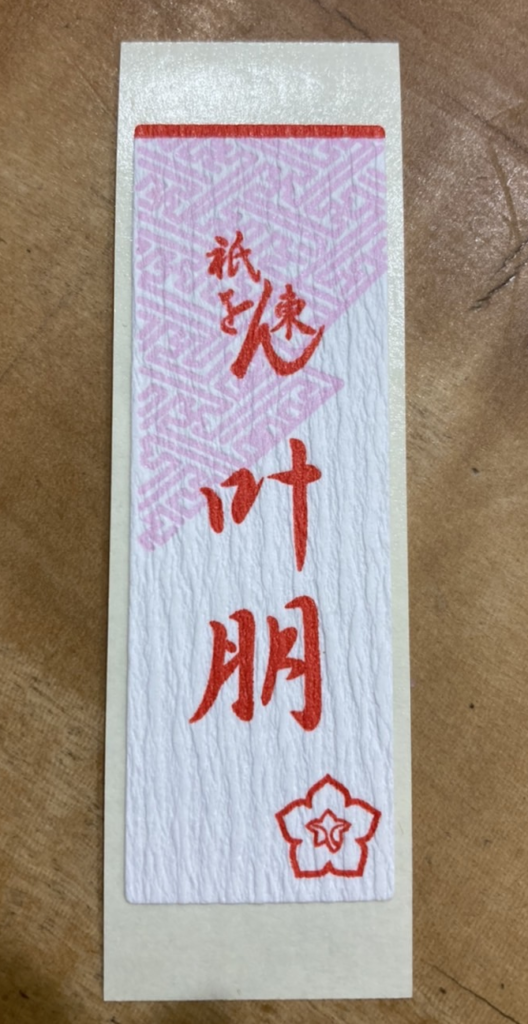
Ichigensan-okotowari (= No Visitors )
There are many people who would like to meet a real maiko, but few people actually do, which is the culture of Kyoto. In Kyoto, there is still a culture called Ichigensan-okotowari, which means first time visitor. “So, what should I do?” The only answer is to go with a regular customer. If you go with your regulars and they introduce you, you can go alone the next time. Only when you are introduced by a regular customer will you be recognized as a customer by the store. It would be funny if we didn’t have this culture, but that’s how “Ichigensan-okotowari” works.
As a side note, there is a subtle difference in the way of saying “Okoshiyasu” to regular customers as a sign of welcome, and “Oideyasu” to newcomers as it is less welcoming. Please enjoy the culture of Kyoto, which is surprising even to Japanese people.
If you really want to meet a maiko, please contact me via Instagram or Twitter, as there are stores where you can meet them without an introduction. However, as I wrote in a previous article, it may take some time for me to reply since I cannot speak anything but Japanese. Thank you for your understanding.
Maiko Dance: “Yugure” & “Gion Kouta” by Tomo Kano
